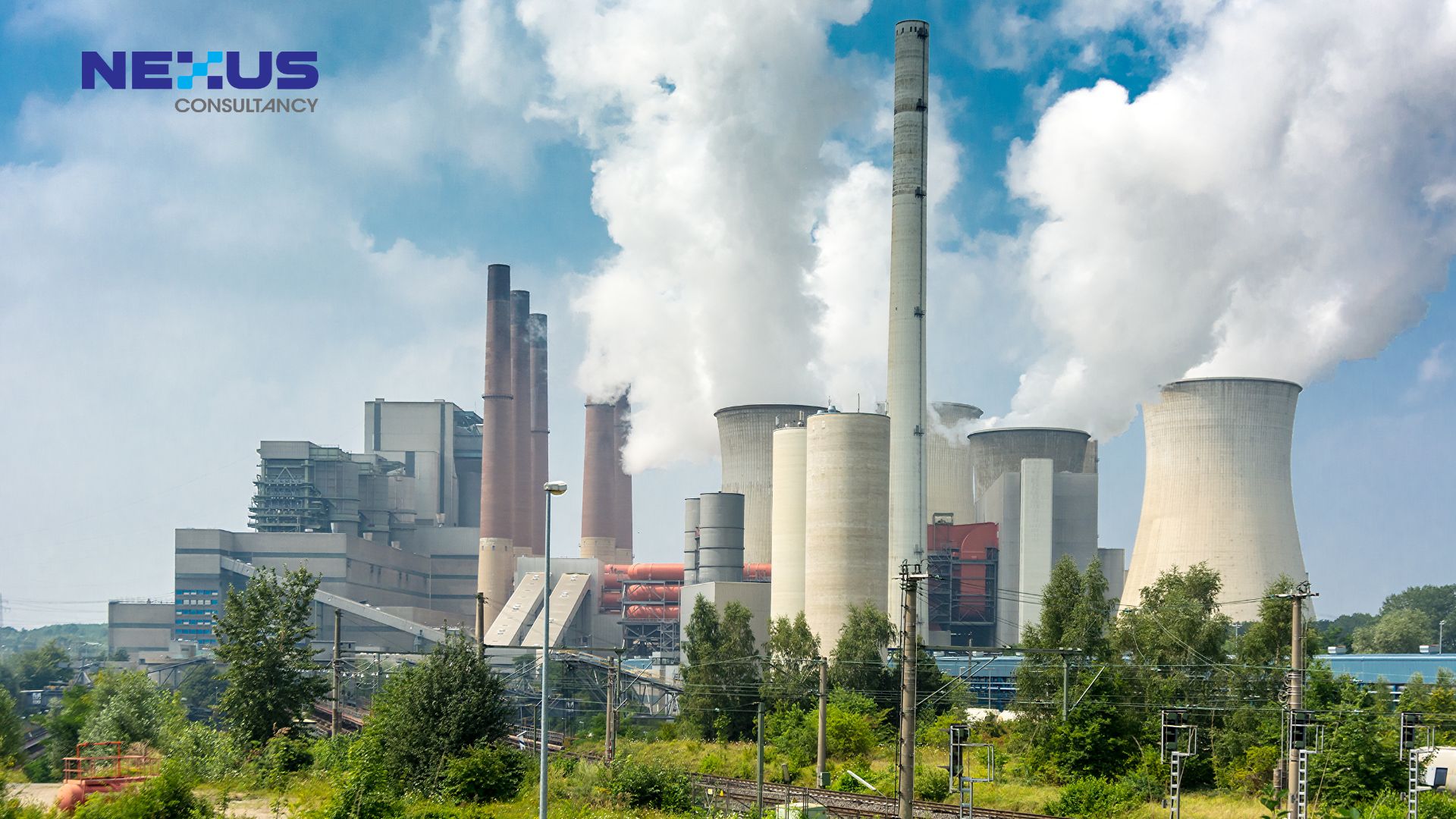
Danielle Tan
Chief Operating Officer
The ISO 14064-1 standard provides guidelines for organizations to quantify, monitor, and report greenhouse gas emissions and removals. This aims to explain the purpose and scope of ISO 14064-1, helping readers understand its importance in greenhouse gas reporting and environmental management.

In a world increasingly concerned about climate change and its consequences, the need for robust frameworks to measure and mitigate greenhouse gas emissions has become paramount. Among the various methodologies and protocols developed to address this challenge, the Greenhouse Gas Protocol stands out as a cornerstone in the global effort to combat climate change.
In the early 2000s, the GHG Protocol, short for Greenhouse Gas Protocol, emerged from the collaboration between the American think tank WRI (World Resources Institute) and the international business coalition WBCSD (World Business Council for Sustainable Development). Comprising around 200 companies dedicated to sustainable development, WBCSD played a pivotal role alongside WRI in the protocol’s inception. This landmark initiative aimed to equip economic entities worldwide with the necessary tools and standards to quantify, disclose, and mitigate their greenhouse gas emissions.
Addressing a crucial need for a standardized approach to greenhouse gas accounting, the GHG Protocol’s development involved cooperation with prominent environmental organizations like the Pew Center on Climate Change (now the C2ES – Center for Climate and Energy Solutions) and WWF. As one of the earliest international standards dedicated to carbon accounting, the GHG Protocol has earned widespread recognition and adoption within various industries.
Central to its framework is not just the method for calculating greenhouse gas emissions but also the means for communicating findings, whether for voluntary or mandatory reporting purposes, or to drive improvement initiatives.
The Greenhouse Gas Protocol encompasses emissions from seven main greenhouse gases attributed to human activities:
- CO₂ (carbon dioxide): Mainly emitted through the combustion of fossil fuels, agricultural practices, and deforestation.
- CH₄ (methane): Predominantly generated by livestock farming and other agricultural activities.
- N2O (nitrous oxide): Utilized in industrial processes such as refrigeration and automotive manufacturing.
- HFCs (hydrofluorocarbons): Found in mining, oil and gas operations, and landfill sites.
- PFCs (perfluorocarbons): Present in cooling systems, air conditioning units, and fire extinguishers.
- SF6 (sulfur hexafluoride): Primarily used in the pharmaceutical industry.
- NF3 (Nitrogen trifluoride ): Used as a Fluorine source in the electronics industry and in high power lasers
The GHG Protocol’s comprehensive coverage of these emissions facilitates a holistic understanding of an organization’s environmental footprint, enabling informed decision-making and targeted emission reduction strategies.
Furthermore, the influence of the GHG Protocol extends beyond its initial creation. Subsequent international standards, such as the ISO 14064 standard established in 2006, have drawn upon the GHG Protocol’s carbon accounting methodologies. Notably, ISO 14064 introduces the requirement for third-party verification of carbon accounting, reflecting a commitment to enhanced transparency and credibility in emissions reporting practices.
In essence, the GHG Protocol stands as a pioneering force in the realm of greenhouse gas accounting, providing a robust framework for organizations to navigate the complexities of emissions measurement, disclosure, and mitigation. As the global community intensifies its efforts to combat climate change, the GHG Protocol remains an indispensable tool in the quest for a more sustainable future.

Understanding the Greenhouse Gas Protocol
At its core, the Greenhouse Gas Protocol provides comprehensive guidance on how to measure, manage, and report greenhouse gas emissions accurately and transparently. It operates on the fundamental principle of standardization, ensuring consistency and comparability across different organizations and sectors. The Protocol encompasses three distinct scopes:
Scope 1: Direct emissions from sources that are owned or controlled by the reporting entity, such as emissions from combustion in owned or controlled boilers, furnaces, vehicles, etc.
Scope 2: Indirect emissions resulting from the generation of purchased electricity, steam, heating, or cooling consumed by the reporting entity.
Scope 3: Indirect emissions that occur in the value chain of the reporting entity, including both upstream and downstream emissions associated with activities such as purchased goods and services, business travel, employee commuting, etc.
The Importance of Standardization
One of the key strengths of the Greenhouse Gas Protocol lies in its emphasis on standardization. By providing clear methodologies and calculation principles, the Protocol enables organizations to measure their emissions consistently, regardless of their size, sector, or geographical location. This standardization not only facilitates internal decision-making but also enhances external transparency and accountability, thereby fostering trust among stakeholders.
Moreover, the Greenhouse Gas Protocol has gained widespread acceptance among governments, businesses, and other stakeholders worldwide. Its adoption by numerous countries as the basis for their national greenhouse gas inventories underscores its credibility and relevance on the global stage. Furthermore, many companies have embraced the Protocol as a guiding framework for setting emission reduction targets, designing carbon management strategies, and disclosing climate-related information to investors and the public.
Driving Sustainable Innovation
Beyond its role in emissions accounting, the Greenhouse Gas Protocol serves as a catalyst for sustainable innovation. By providing organizations with a structured approach to understanding their carbon footprint, the Protocol empowers them to identify emission hotspots, uncover inefficiencies, and explore opportunities for emissions reduction and resource optimization. This process often leads to the implementation of innovative technologies, practices, and business models that not only mitigate climate change but also enhance operational efficiency and competitiveness.
Moreover, the transparency and comparability facilitated by the Greenhouse Gas Protocol encourage healthy competition among companies striving to demonstrate environmental leadership. Publicly disclosing emissions data in accordance with the Protocol enables organizations to benchmark their performance against industry peers, thereby incentivizing continuous improvement and driving the adoption of best practices across sectors.
Addressing Challenges and Advancing Solutions
Despite its numerous benefits, the Greenhouse Gas Protocol faces certain challenges and limitations. One such challenge is the complexity involved in collecting, verifying, and reporting emissions data, especially for organizations with extensive supply chains or diverse operational activities. Additionally, ensuring the accuracy and completeness of reported emissions requires ongoing investment in monitoring, measurement, and data management systems.
Furthermore, as the global economy evolves, new emission sources and pathways may emerge, necessitating periodic updates and revisions to the Protocol to ensure its relevance and effectiveness. In this regard, ongoing collaboration between policymakers, businesses, civil society organizations, and technical experts is essential to enhance the Protocol’s robustness and adaptability in the face of evolving climate challenges.

Conclusion
In an era defined by escalating climate concerns and urgent calls for action, the Greenhouse Gas Protocol stands as a beacon of hope and progress. By providing a standardized framework for measuring, managing, and reporting greenhouse gas emissions, the Protocol empowers organizations to take meaningful steps towards a low-carbon future. Moreover, its emphasis on transparency, accountability, and innovation not only drives environmental stewardship but also fosters economic resilience and sustainable development. As we navigate the complexities of the climate crisis, the Greenhouse Gas Protocol serves as a steadfast ally in our collective quest for a healthier, more sustainable planet.
Reference:
- https://ghgprotocol.org/
- https://www.kabaun.com/en/post/ghg-protocol-define
Curious to learn more about Greenhouse Gas Protocol and how to begin? Get in touch with us now for more information.






